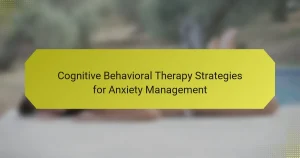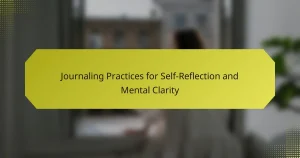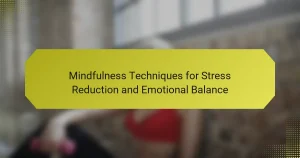Art therapy methods provide powerful avenues for healing and personal expression through creativity. This approach includes universal benefits like emotional healing and enhanced self-expression. Unique techniques such as guided imagery and art journaling facilitate deeper self-reflection. Cultural context plays a significant role in shaping practices, ensuring therapy is tailored to individual needs.
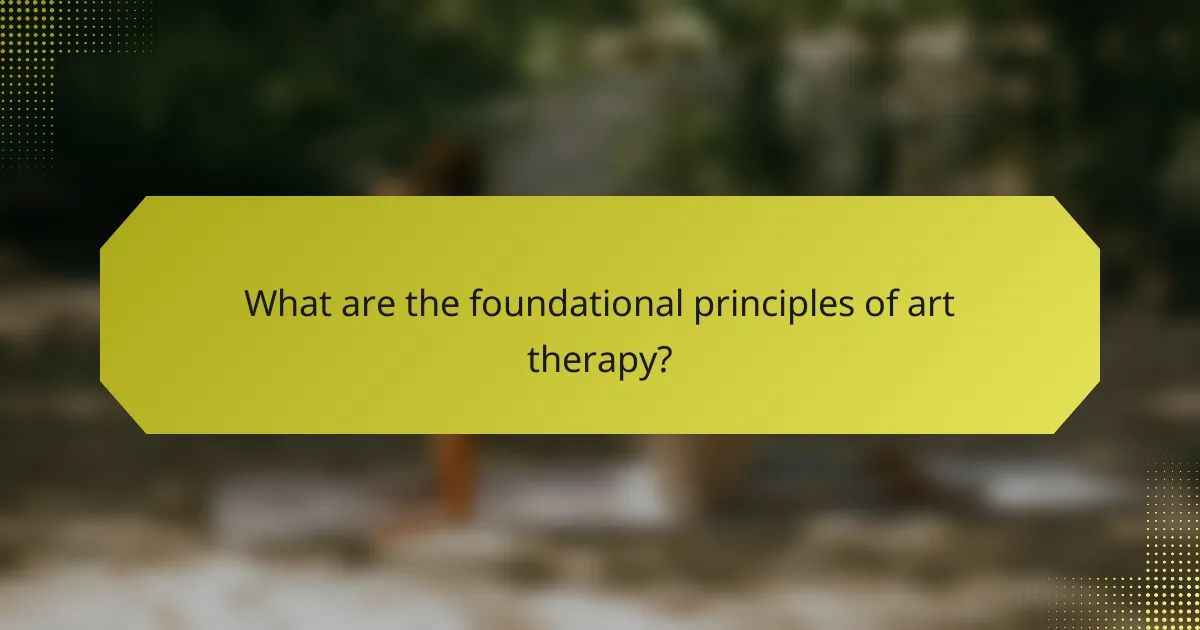
What are the foundational principles of art therapy?
Art therapy is grounded in principles that promote healing through creativity. These foundational principles include the therapeutic relationship, self-expression, and the use of art as a communication tool. Art therapy encourages individuals to explore emotions and experiences non-verbally, facilitating personal insight and emotional release. The unique attribute of art therapy lies in its ability to engage clients in a process that fosters healing and personal growth through artistic creation.
How does art therapy facilitate healing?
Art therapy facilitates healing by promoting emotional expression and self-discovery through creative processes. It helps individuals process trauma, reduce anxiety, and improve mental wellness. Techniques such as painting, drawing, and sculpting allow for non-verbal communication, making it easier to express complex feelings. As a result, art therapy fosters a sense of empowerment and personal insight, enhancing overall well-being.
What forms of art are commonly used in therapy?
Art therapy commonly employs methods such as painting, drawing, sculpture, music, and dance to facilitate healing and personal expression. These forms allow individuals to communicate feelings and experiences non-verbally. Painting and drawing serve as accessible entry points for self-exploration, while music and dance can enhance emotional release and connection. Each method offers unique benefits, catering to diverse preferences and therapeutic needs.
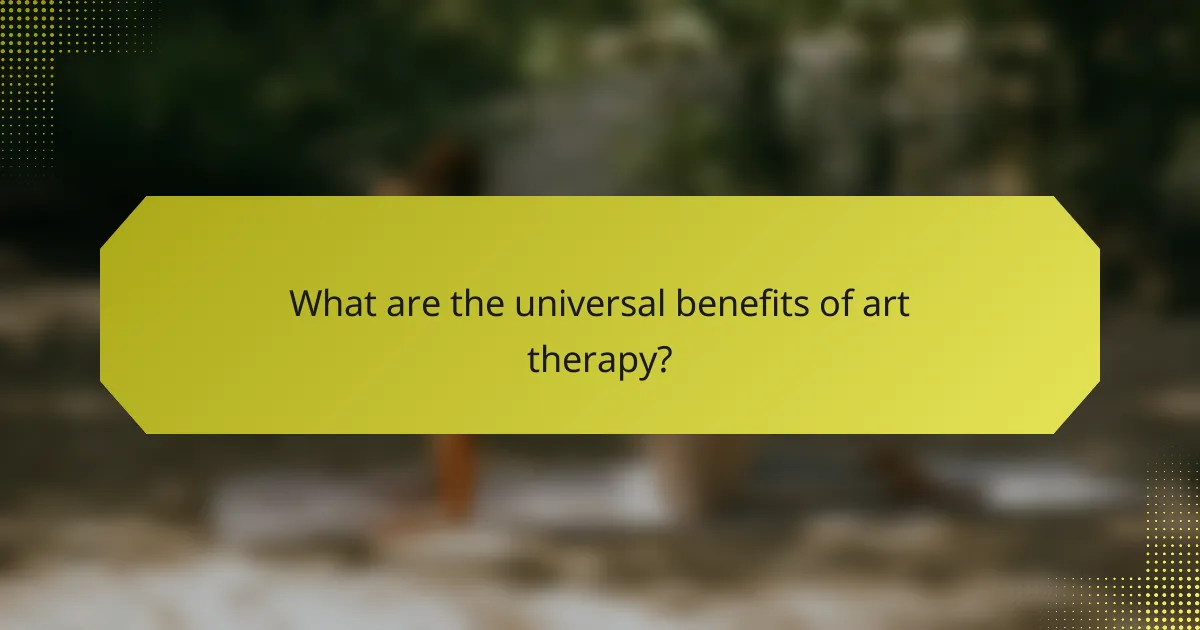
What are the universal benefits of art therapy?
Art therapy offers numerous universal benefits, including emotional healing, enhanced self-expression, and improved mental well-being. It fosters creativity, allowing individuals to process feelings and experiences non-verbally. Studies show that art therapy can reduce anxiety and depression, promoting a sense of accomplishment and empowerment. Additionally, it aids in developing coping skills and strengthens interpersonal relationships through shared creative experiences.
How does art therapy improve emotional expression?
Art therapy enhances emotional expression by providing a creative outlet for feelings. It allows individuals to communicate complex emotions through visual art, which can be more accessible than verbal expression. Techniques such as painting, drawing, and sculpting facilitate self-discovery and emotional processing. Research shows that art therapy can reduce anxiety and improve mood, promoting overall mental well-being. By engaging in art-making, individuals often uncover insights into their emotions, fostering personal growth and healing.
What role does creativity play in personal healing?
Creativity plays a vital role in personal healing by facilitating emotional expression and processing trauma. Art therapy methods harness creative activities like painting and sculpting to promote self-discovery and emotional release. These methods encourage individuals to explore their feelings in a non-verbal way, which can lead to improved mental well-being. Engaging in creative processes has been shown to reduce anxiety and enhance mood, making it a unique therapeutic approach. As a result, creativity becomes a powerful tool for personal transformation and healing.
How can art therapy enhance mental well-being?
Art therapy enhances mental well-being by fostering self-expression and emotional healing. It utilizes creative processes to help individuals explore feelings, reduce anxiety, and improve mood. Research indicates that engaging in art therapy can lead to significant reductions in symptoms of depression and PTSD. Unique attributes of art therapy include its ability to bypass verbal communication barriers, making it especially effective for individuals who struggle to articulate their emotions. As a result, art therapy serves as a powerful tool for personal growth and psychological resilience.
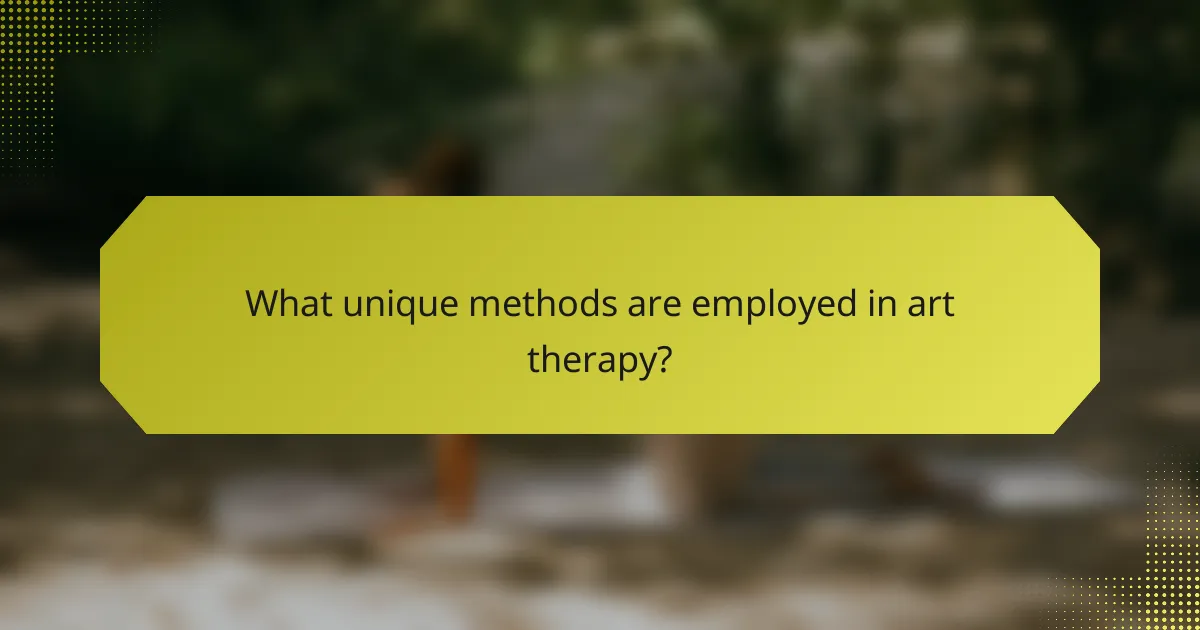
What unique methods are employed in art therapy?
Art therapy employs unique methods that facilitate healing and personal expression through creativity. Techniques include guided imagery, where clients visualize scenes to evoke emotions, and art-making as a form of non-verbal communication. Another method is the use of collage, which allows individuals to explore their identities and experiences visually. Additionally, the practice of art journaling combines writing and visual art to promote self-reflection. These methods harness the therapeutic power of creativity, fostering emotional release and personal insight.
How does expressive arts therapy differ from traditional art therapy?
Expressive arts therapy emphasizes creative expression as a process of healing, while traditional art therapy focuses on the creation of art for therapeutic purposes. Expressive arts therapy integrates multiple art forms, including music, dance, and drama, promoting a holistic approach to emotional healing. In contrast, traditional art therapy primarily uses visual arts like painting and drawing. This unique attribute of expressive arts therapy allows for a broader range of emotional exploration and personal expression.
What is the significance of guided imagery in art therapy?
Guided imagery in art therapy enhances emotional healing and personal expression. It allows individuals to visualize their feelings and experiences, fostering deeper connections with their art. This technique can unlock creativity, reduce anxiety, and improve self-awareness. By combining visualization with artistic expression, clients can explore complex emotions and gain insights into their inner worlds, making guided imagery a unique and valuable method in art therapy.
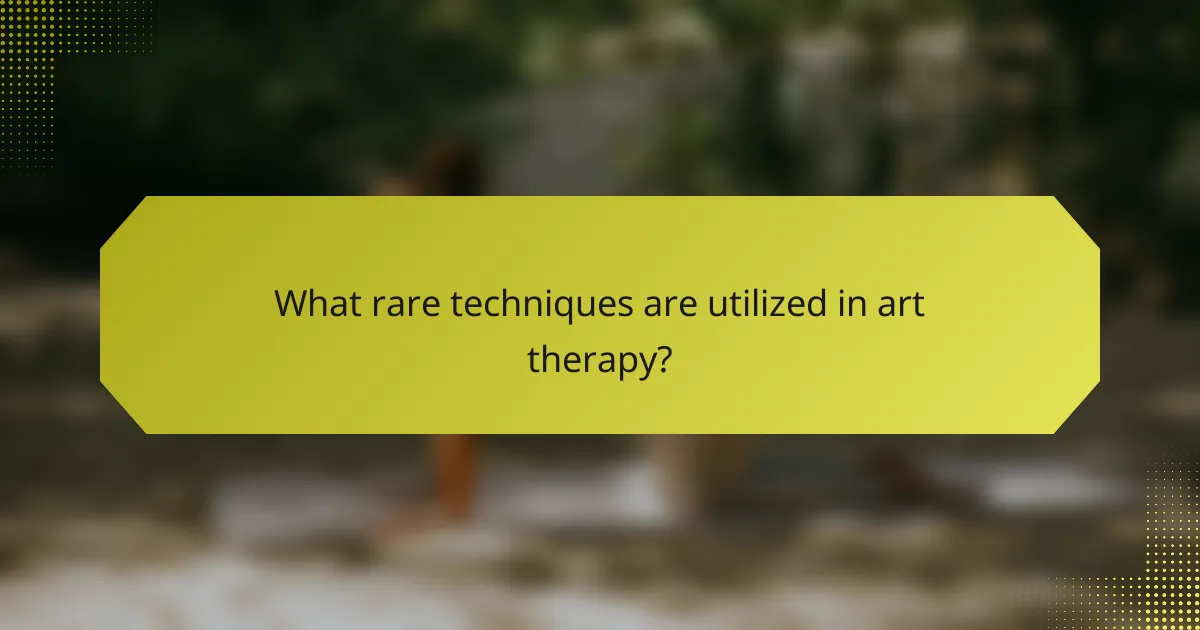
What rare techniques are utilized in art therapy?
Art therapy employs rare techniques such as sand tray therapy, which uses miniature figures and sand to express emotions. Another unique method is art journaling, combining visual art with writing for deeper self-reflection. Furthermore, digital art therapy utilizes technology to create art as a therapeutic outlet. These techniques enhance personal expression and promote healing through innovative approaches.
How does nature-based art therapy work?
Nature-based art therapy works by integrating natural elements into the creative process to promote healing and self-expression. This method utilizes the therapeutic benefits of nature, such as reduced stress and enhanced mood, while allowing individuals to explore their emotions through artistic activities. Participants may engage in activities like painting with natural materials or creating sculptures from found objects, fostering a unique connection with their environment. Research indicates that this approach can lead to improved mental health outcomes, making it a valuable tool in art therapy practices.
What is the impact of digital art in therapeutic settings?
Digital art significantly enhances therapeutic settings by facilitating emotional expression and improving mental well-being. It serves as a unique medium for individuals to communicate feelings that may be difficult to articulate verbally. Research indicates that engaging with digital art can reduce anxiety and depression, fostering a sense of accomplishment and self-worth. Moreover, the accessibility of digital tools allows for diverse creative exploration, making art therapy more inclusive. As a result, digital art becomes a powerful tool in promoting healing and personal growth.
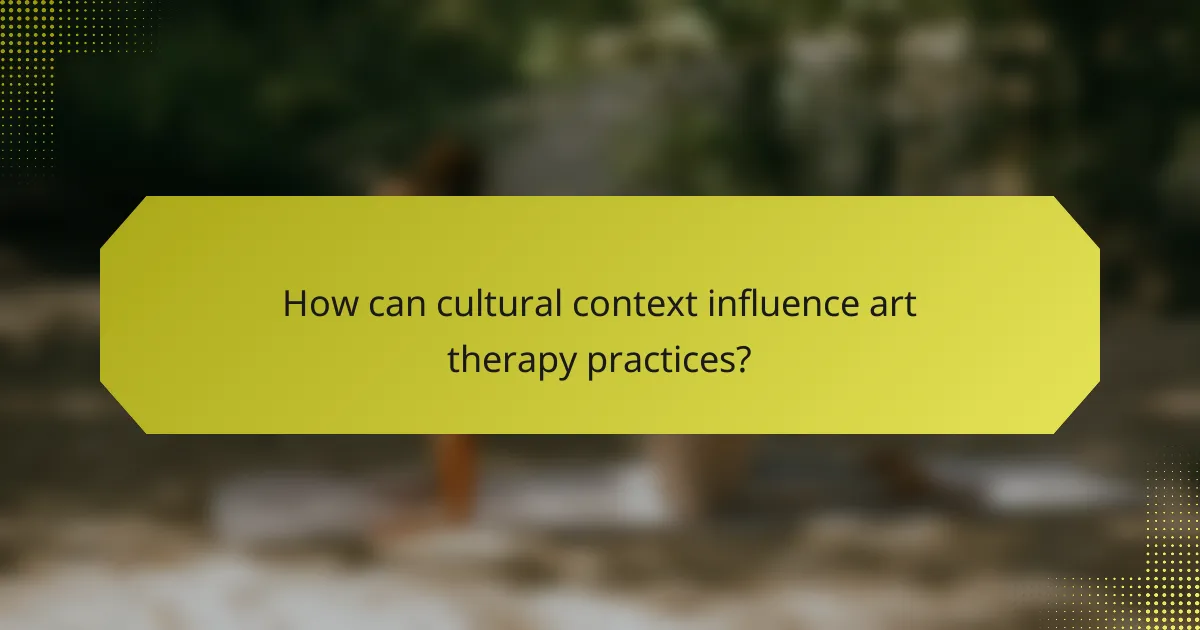
How can cultural context influence art therapy practices?
Cultural context significantly shapes art therapy practices by influencing techniques and interpretations. Different cultures have unique artistic traditions that can enhance therapeutic outcomes. For example, indigenous art forms may incorporate spiritual elements, fostering deeper connections in therapy. Additionally, cultural values can dictate the expression of emotions, impacting how individuals engage with art as a healing tool. Understanding these cultural nuances is essential for therapists to tailor their approaches effectively.
What are the regional variations in art therapy methods?
Art therapy methods vary significantly across regions, reflecting cultural values and therapeutic practices. For instance, in North America, expressive arts therapy emphasizes individual creativity and personal expression. Conversely, in Japan, art therapy often integrates traditional practices like calligraphy and ink painting, focusing on mindfulness and cultural heritage. In Europe, particularly in Germany, art therapy may incorporate psychological theories, emphasizing structured techniques to address emotional issues. Each region’s unique approach enriches the overall practice of art therapy, showcasing diverse methodologies that cater to different healing needs.
How do local beliefs shape the approach to art therapy?
Local beliefs significantly influence art therapy by shaping the methods and practices used in healing. Cultural perspectives determine what forms of expression are valued, affecting the therapeutic process. For instance, communities may prioritize traditional art forms that resonate with their history and values. This cultural alignment fosters trust and enhances engagement in therapy sessions. Unique attributes, such as indigenous techniques or local symbolism, may also be integrated into art therapy, creating a personalized healing experience. As a result, practitioners must adapt their approaches to respect and incorporate local beliefs for effective outcomes.
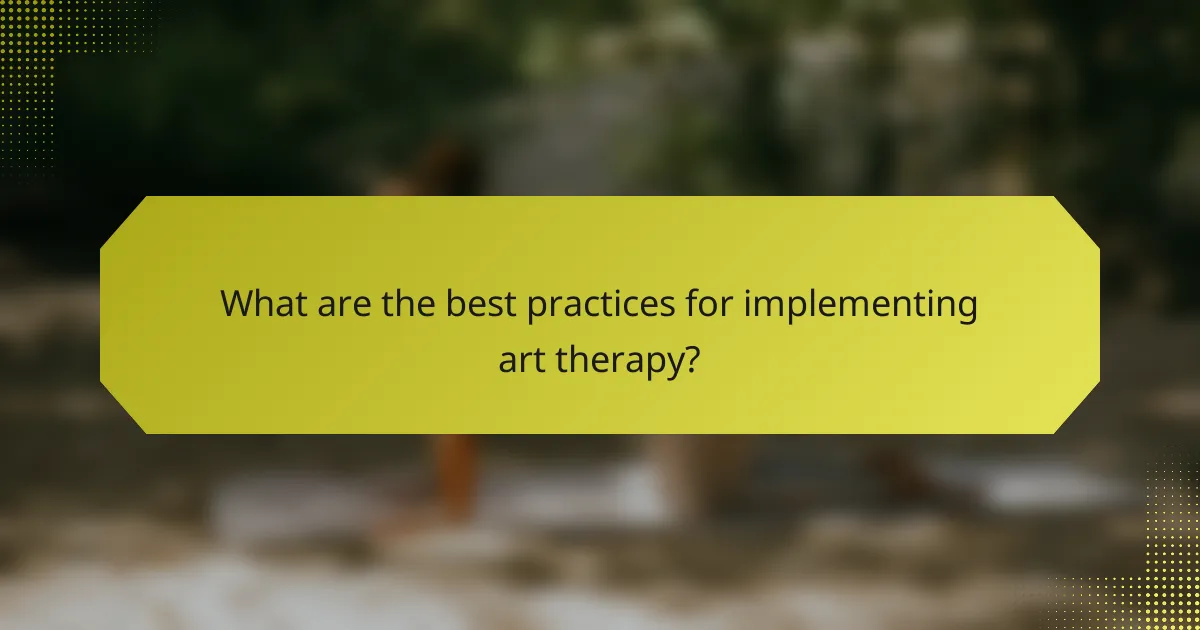
What are the best practices for implementing art therapy?
Art therapy should be implemented using structured methods that promote healing and personal expression. Key best practices include creating a safe environment, encouraging self-exploration, and utilizing various art mediums.
1. Establish a welcoming space that fosters comfort and creativity.
2. Encourage participants to express emotions through art without judgment.
3. Incorporate diverse art forms, such as painting, drawing, or sculpture, to engage different senses.
4. Facilitate group sessions to promote community and shared experiences.
5. Regularly evaluate progress and adapt methods to individual needs.
6. Ensure confidentiality to build trust and openness among participants.
What common mistakes should be avoided in art therapy?
To enhance the effectiveness of art therapy, avoid common mistakes. Failing to establish a safe environment can hinder expression. Neglecting individual needs may limit personal growth. Overemphasizing artistic skill can discourage participation. Lastly, not integrating feedback can stifle progress and connection.
How can practitioners optimize the art therapy experience?
Practitioners can optimize the art therapy experience by creating a safe and supportive environment. Establishing trust encourages clients to express themselves freely. Utilizing diverse art materials enhances creative exploration. Tailoring sessions to individual needs fosters personal connection to the process. Regular reflection on the artwork deepens understanding and healing.
What expert insights can enhance the effectiveness of art therapy?
Expert insights can significantly enhance the effectiveness of art therapy by tailoring approaches to individual needs. Incorporating techniques such as mindfulness can deepen emotional awareness, while integrating cultural elements fosters personal connection. Regular feedback loops between therapist and client improve engagement and outcomes. Additionally, utilizing diverse art forms, such as digital media or sculpture, can cater to varied preferences and enhance expression.
